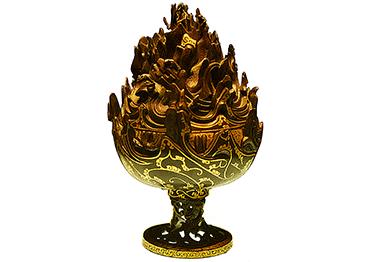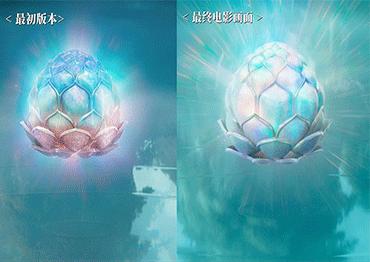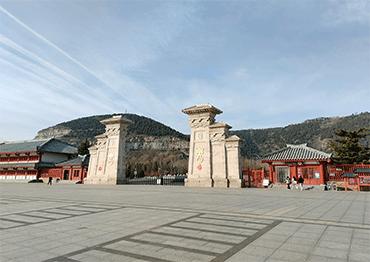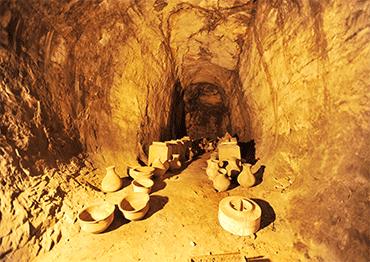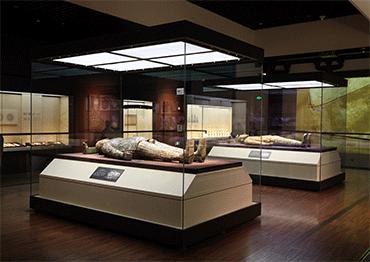In 1968, a small engineering unit of the People’s Liberation Army (PLA) was conducting construction work near Mancheng, not far from Baoding in Hebei Province. After a mountain blasting operation, the unit discovered a soldier was missing, having fallen into a huge cave, which contained much more than a missing man.
The cave revealed bronze ware, jade artifacts, pottery and other ancient valuables – a veritable treasure trove. Experts from the Hebei Provincial Bureau of Cultural Relics made a secret inspection, and through inscriptions on the bronzes, they discovered it was a burial site of a king from the Zhongshan Kingdom over 2,000 years ago.
Historically, there were two Zhongshan Kingdoms. One was established by northern tribes during the Warring States period (475-221 BCE). However, the inscriptions on these bronzes were in Han clerical script, confirming that the artifacts were from a Han Dynasty (206 BCE-220 CE) tomb of the Zhongshan Kingdom.
Because the Han Dynasty was known for its lavish burial customs, tombs from that era were often filled with abundant burial goods. As a result, many Han tombs were looted long ago. In 1968, no Han tomb had been discovered in pristine condition. Moreover, the owner of this particular tomb was a person of very high status. So how had it remained untouched?
The reason lies in its unique construction. Unlike other Han tombs, it was built into a mountain, making it a cliff tomb – a natural cave repurposed for burial. Among Han emperors, only Emperor Wen of Han, who died in 157 BCE, had a similar burial site.
It was hard to find the soldier who fell into the cave because it measured 6.8 meters from floor to ceiling, with an interior space resembling that of a grand ballroom. It held thousands of burial items, complete with a main chamber, passageways and side rooms to the north and south, resembling multiple rooms.
The discovery of such a high-status Han tomb was major news. The question arose: should such a high-profile Han tomb be excavated? Could it lead to more upheaval? This sensitive dilemma landed on the desk of premier Zhou Enlai.
Zhou consulted Guo Moruo, then president of the Chinese Academy of Sciences, who recognized it as a significant archaeological opportunity. He decided to assemble a joint excavation team consisting of the Institute of Archaeology of the Chinese Academy of Sciences, the Hebei provincial archaeological team, and the PLA. The excavations proceeded in secret.
Progress was fast. Among the large number of bronze artifacts found, one piece bore an inscription saying “34th year,” but with no other identifying date. It was hard to tell which king of Zhongshan it was. Based on historical records, there were 10 Zhongshan kings, but only the first, Liu Sheng, or the Jing King of Zhongshan, had a reign that was long enough at 42 years. They concluded that the tomb must have been his.
Liu Sheng was the half-brother of Emperor Wu of Han and was ennobled as the king of Zhongshan by their father Emperor Jing of Han. Historical records about him are sparse, but he is described as being “fond of wine and women.”
He is said to have had over 120 sons, an astonishing number that is specifically noted in historian Ban Gu’s Book of Han about 140 years after Liu Sheng died. While this may seem unbelievable, it is understandable given that Liu Sheng apparently spent much of his time drinking, indulging in pleasure and fathering children.
Liu Sheng is a familiar figure to many because of the later warlord Liu Bei (161-223). He claimed ancestry from Liu Sheng, eventually rising to become ruler of the Shu Kingdom during the Three Kingdoms period (220-280). With so many sons, Liu Bei’s claim of being a descendant is hard to verify.
Politically, Liu Sheng was well aware of the delicacy of imperial power. To avoid being drawn into the power struggles of the court, he adopted a strategy of self-preservation, focusing his energy on enjoying life. Whenever officials tried to discuss court affairs with him, he would deflect the conversation with excuses.
However, Liu Sheng was not entirely without accomplishments. During his reign, he developed his fiefdom’s economy, ensuring a relatively stable life for the people. The exquisite artifacts unearthed from his tomb reflect his luxurious lifestyle and pursuit of culture and the arts.
During the excavation, archaeologists meticulously cleaned every corner, careful not to overlook any important clues. A wealth of precious artifacts came to light, offering a much deeper understanding of the Western Han Dynasty (202 BCE-8 CE).
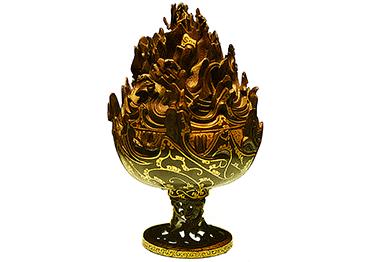
 Old Version
Old Version
